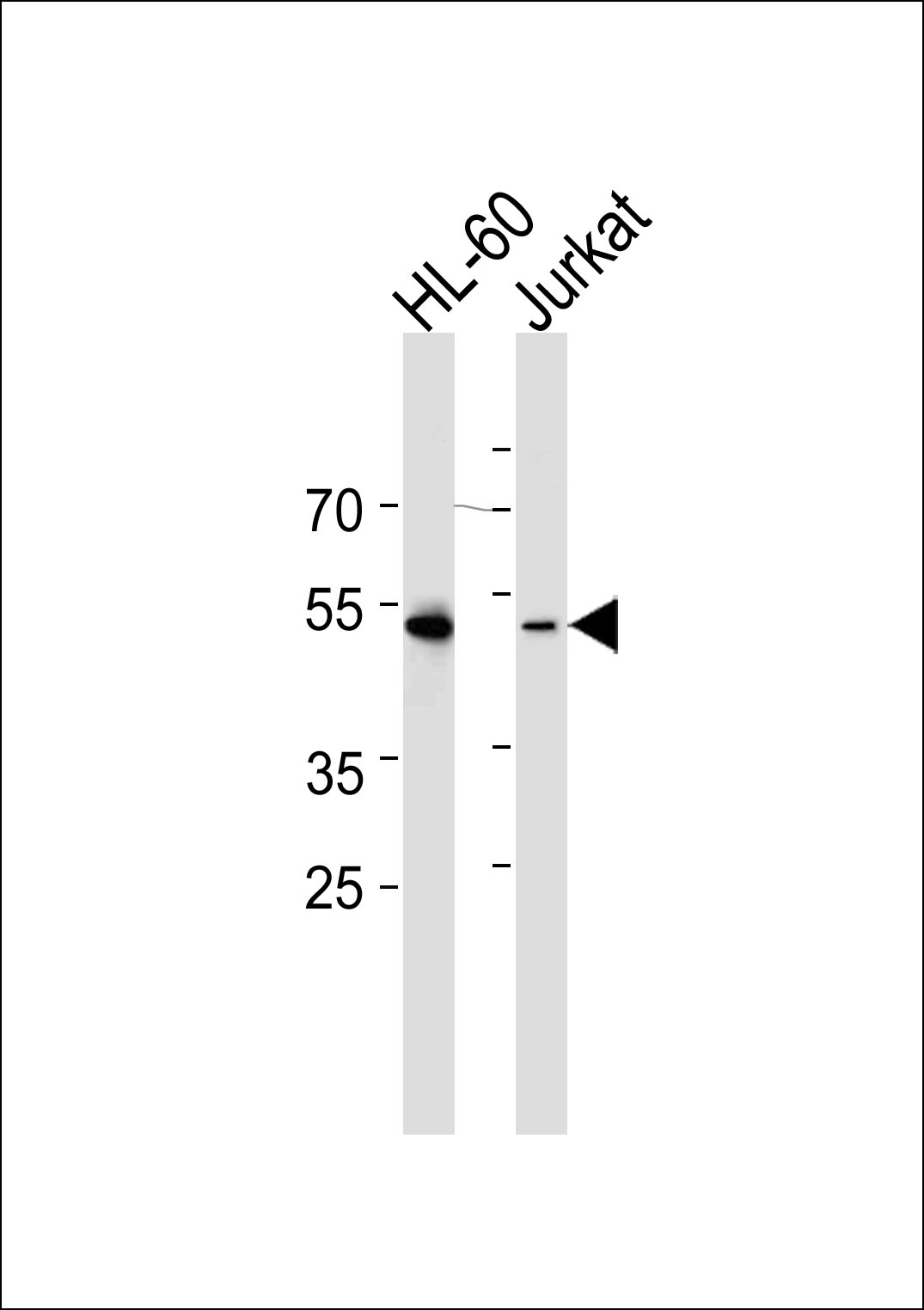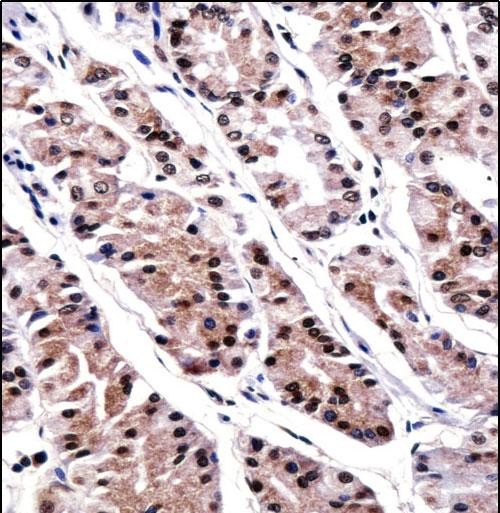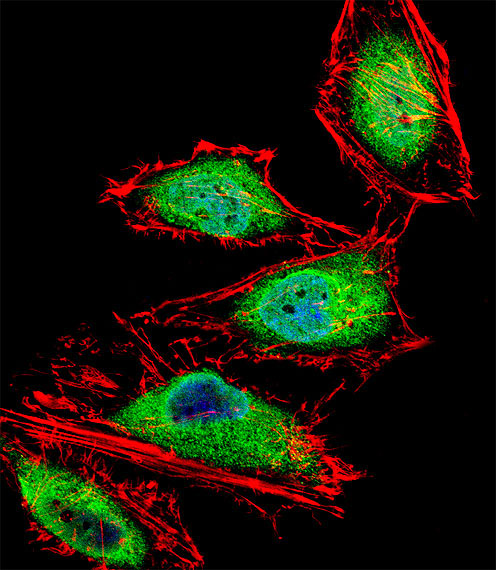产品名称
RUNX3 Rabbit Polyclonal Antibody (Center)
别名
Runt-related transcription factor 3, Acute myeloid leukemia 2 protein, Core-binding factor subunit alpha-3, CBF-alpha-3, Oncogene AML-2, Polyomavirus enhancer-binding protein 2 alpha C subunit, PEA2-alpha C, PEBP2-alpha C, SL3-3 enhancer factor 1 alpha C subunit, SL3/AKV core-binding factor alpha C subunit, RUNX3, AML2, CBFA3, PEBP2A3
存储缓冲液
Purified polyclonal antibody supplied in PBS with 0.09% (W/V) New type preservative N. This antibody is purified through a protein A column, followed by peptide affinity purification.
Human Gene ID
NP_001026850.1;NP_004341.1
Human Swissprot No.
Q13761
特异性
This RUNX3 antibody is generated from rabbits immunized with a KLH conjugated synthetic peptide between 168-197 amino acids from the Central region of human RUNX3.
稀释度
WB~~1:1000;IHC-P~~1:100~500;IF~~1:10~50
运输及保存条件
Maintain refrigerated at 2-8°C for up to 2 weeks. For long term storage store at -20°C in small aliquots to prevent freeze-thaw cycles.
背景介绍
This gene encodes a member of the runt domain-containing
family of transcription factors. A heterodimer of this protein and
a beta subunit forms a complex that binds to the core DNA sequence
5'-PYGPYGGT-3' found in a number of enhancers and promoters, and
can either activate or suppress transcription. It also interacts
with other transcription factors. It functions as a tumor
suppressor, and the gene is frequently deleted or transcriptionally
silenced in cancer. Multiple transcript variants encoding different
isoforms have been found for this gene.
组织表达
Expressed in gastric cancer tissues (at protein level).
细胞定位
Nucleus {ECO:0000255|PROSITE-ProRule:PRU00399, ECO:0000269|PubMed:20100835, ECO:0000269|PubMed:20599712}. Cytoplasm. Note=The tyrosine phosphorylated form localizes to the cytoplasm. Translocates from the cytoplasm to the nucleus following TGF-beta stimulation
功能
Forms the heterodimeric complex core-binding factor (CBF) with CBFB. RUNX members modulate the transcription of their target genes through recognizing the core consensus binding sequence 5'- TGTGGT-3', or very rarely, 5'-TGCGGT-3', within their regulatory regions via their runt domain, while CBFB is a non-DNA-binding regulatory subunit that allosterically enhances the sequence-specific DNA-binding capacity of RUNX. The heterodimers bind to the core site of a number of enhancers and promoters, including murine leukemia virus, polyomavirus enhancer, T-cell receptor enhancers, LCK, IL3 and GM-CSF promoters (By similarity). May be involved in the control of cellular proliferation and/or differentiation. In association with ZFHX3, upregulates CDKN1A promoter activity following TGF-beta stimulation (PubMed:
20599712). CBF complexes repress ZBTB7B transcription factor during cytotoxic (CD8+) T cell development. They bind to RUNX-binding sequence within the ZBTB7B locus acting as transcriptional silencer and allowing for cytotoxic T cell differentiation. CBF complexes binding to the transcriptional silencer is essential for recruitment of nuclear protein complexes that catalyze epigenetic modifications to establish epigenetic ZBTB7B silencing (By similarity).



